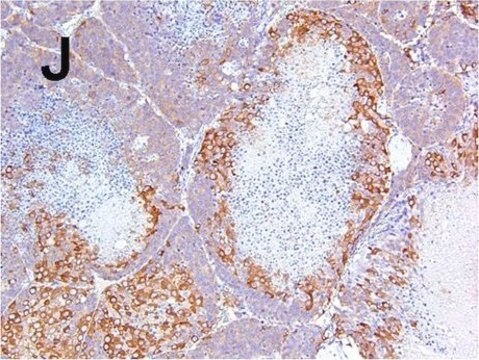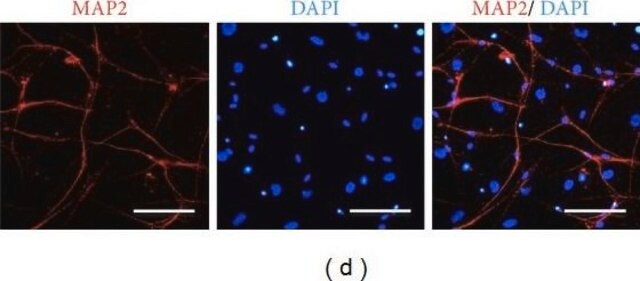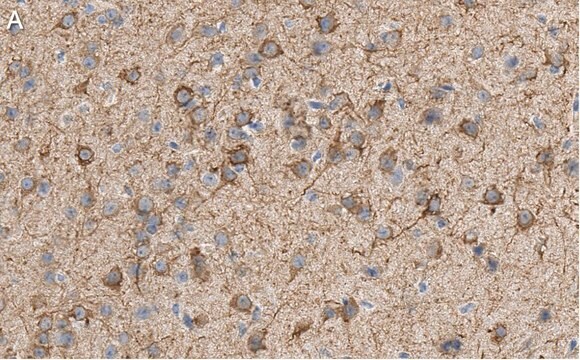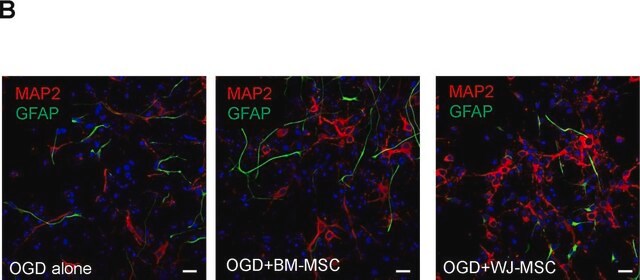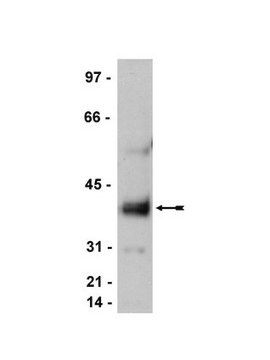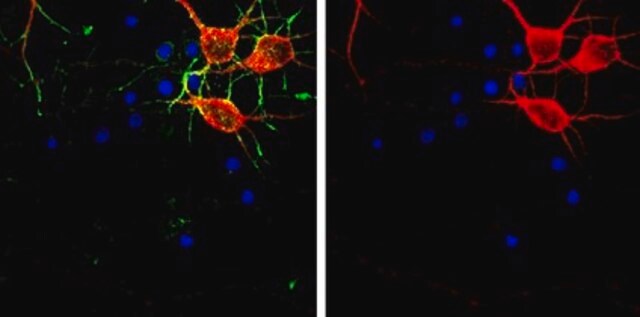M9942
Anticorps anti-MAP2 monoclonal antibody produced in mouse
clone HM-2, purified from hybridoma cell culture
About This Item
Produits recommandés
Source biologique
mouse
Niveau de qualité
Conjugué
unconjugated
Forme d'anticorps
purified immunoglobulin
Type de produit anticorps
primary antibodies
Clone
HM-2, monoclonal
Forme
buffered aqueous solution
Poids mol.
antigen ~280 kDa
Espèces réactives
rat, chicken, human, mouse, bovine, quail
Conditionnement
antibody small pack of 25 μL
Concentration
~2 mg/mL
Technique(s)
immunocytochemistry: suitable
immunohistochemistry: suitable
microarray: suitable
western blot: 1-2 μg/mL using rat brain extract
Isotype
IgG1
Numéro d'accès UniProt
Conditions d'expédition
dry ice
Température de stockage
−20°C
Modification post-traductionnelle de la cible
unmodified
Informations sur le gène
human ... MAP2(4133)
mouse ... Mtap2(17756)
rat ... Map2(25595)
Vous recherchez des produits similaires ? Visite Guide de comparaison des produits
Description générale
MAP2 is known to promote microtubule assembly and to form side arms on microtubules. It also interacts with neurofilaments, actin and other elements of the cytoskeleton.
Spécificité
Immunogène
Application
By immunoblotting, a working antibody concentration of 1-2 μg/ml is recommended using a rat brain extract.
Actions biochimiques/physiologiques
Forme physique
Stockage et stabilité
Clause de non-responsabilité
Vous ne trouvez pas le bon produit ?
Essayez notre Outil de sélection de produits.
En option
Produit(s) apparenté(s)
Code de la classe de stockage
12 - Non Combustible Liquids
Classe de danger pour l'eau (WGK)
WGK 2
Point d'éclair (°F)
Not applicable
Point d'éclair (°C)
Not applicable
Certificats d'analyse (COA)
Recherchez un Certificats d'analyse (COA) en saisissant le numéro de lot du produit. Les numéros de lot figurent sur l'étiquette du produit après les mots "Lot" ou "Batch".
Déjà en possession de ce produit ?
Retrouvez la documentation relative aux produits que vous avez récemment achetés dans la Bibliothèque de documents.
Les clients ont également consulté
Notre équipe de scientifiques dispose d'une expérience dans tous les secteurs de la recherche, notamment en sciences de la vie, science des matériaux, synthèse chimique, chromatographie, analyse et dans de nombreux autres domaines..
Contacter notre Service technique
